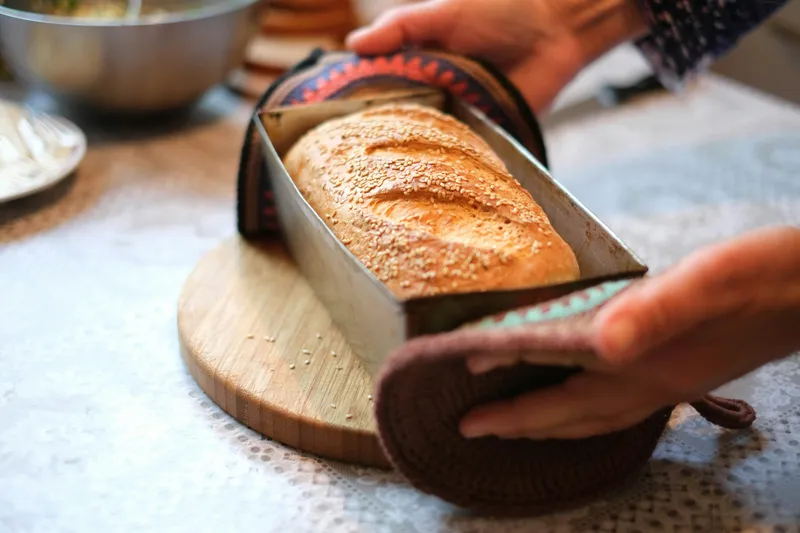How to Price Baked Goods to Sell (and Build a Profitable Home Bakery)
How to price baked goods to sell isn’t just a question — it’s the foundation of running a successful home bakery. Whether you’re frosting cupcakes for a farmer’s market or fulfilling special‑order wedding cakes, knowing exactly what your creations cost — and how to price them for profit — is what separates a passion project from a thriving baking business. These practical home bakery business tips will help you transform your favorite recipes into consistent income.
Why Delicious Isn’t Enough
Your kitchen smells like heaven. Friends rave about your brownies. Instagram loves your glossy cake shots. But if you’re thinking about turning your passion into a baking business, here’s the hard truth: delicious isn’t enough. The real secret? Knowing your numbers — because that’s how you turn flour and sugar into sustainable income.
The Hidden Costs That Sneak Up on Home Bakers
It’s not just flour, butter, eggs, and chocolate chips. It’s:
- Packaging supplies
- Electricity or gas
- Delivery fuel
- Your valuable time
Without a recipe cost calculator, these hidden expenses can eat into your profits faster than a plate of warm cookies at a bake sale. Tracking every cost — down to the gram and the minute — lets you:
- Set prices with confidence
- Compete in your local market
- Pay yourself fairly
The Bakery Business Manager from Ardent Workshop makes this process simple by combining a recipe cost calculator, inventory tracker, and profit margin dashboard in one Excel workbook — so you can see exactly where your money is going.
Step One: Price Every Ingredient
Use a baking cost spreadsheet or ingredient cost tracker to break each recipe into exact costs per batch and per serving.
Factor in:
- Bulk pricing from suppliers
- Seasonal ingredient changes
- Premium upgrades (Belgian chocolate, organic vanilla)
If your chocolate chip cookies cost $0.42 each to make and you sell them for $0.50, you’re barely breaking even — and that’s before packaging and labor. Knowing your per‑unit cost helps you adjust prices for healthy profit margins while staying competitive.
With the Bakery Business Manager, you can enter your ingredient purchases once and let the tool automatically update your recipe costs whenever prices change.
Step Two: Treat Packaging as an Ingredient
Custom cake boxes, cupcake inserts, labels, and ribbon all add up. Many bakers toss these into “miscellaneous” — but buyers pay for presentation as much as flavor.
By counting packaging as a core cost:
- Your profits stay intact
- Premium packaging boosts perceived value
- You can price confidently alongside boutique bakeries
The Bakery Business Manager even includes packaging calculators, so you can factor presentation into your pricing without extra spreadsheets.
Step Three: Pay Yourself for Your Time
Whisking, kneading, baking, decorating, cleaning — it’s all labor. Even if you’re not cutting yourself a paycheck yet, assigning an hourly rate in your recipe cost calculation:
- Protects you from burnout
- Future‑proofs your business for hiring help or expansion
- Gives you a realistic picture of whether your prices support long‑term growth
Your time is one of your most valuable ingredients. Price it accordingly — and track it alongside your other costs in the Bakery Business Manager for a complete profitability picture.
Step Four: Don’t Forget the Extras
Beyond ingredients, packaging, and labor, a thriving home baking business often faces:
- Licensing or cottage food permit fees
- Farmers’ market stall rentals
- Marketing costs (business cards, ads, social media promotions)
- Delivery or courier services
Including these in your pricing ensures you’re covering the true cost of doing business.
Final Whisk of Advice
Every successful bakery business is built on more than just talent in the kitchen — it’s built on systems that keep your costs in check and your profits rising. The Bakery Business Manager from Ardent Workshop was designed for home bakers like you, bringing together a recipe cost calculator, inventory tracker, and expense log in one simple Excel tool. By baking these tools into your daily routine, you’ll spend less time on guesswork and more time perfecting the treats your customers love. When you run your bakery with clarity and confidence, the sweetest part isn’t just the cake — it’s the business you’ve built around it.
